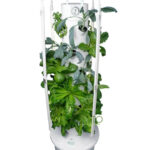Ballet, the epitome of grace and artistry, is a dance form that demands precision, dedication, and above all, the right attire. As dancers glide across the stage, their movements are not only an expression of emotions but also a display of the aesthetics inherent in ballet. This brings us to a crucial aspect of ballet performance – the attire. In this guide, we will delve into the world of ballet clothes, exploring the essential elements that make up these garments and offering insights into how to choose the perfect ensemble for a flawless performance.
Understanding the Essence of Ballet Clothes
Ballet clothes are not merely costumes; they are an extension of a dancer’s body, reflecting the artistry and technique that define this dance form. The primary purpose of ballet attire is to provide dancers with the freedom of movement while highlighting the elegance and fluidity of their motions. From leotards and tutus to tights and ballet shoes, each component serves a unique function in enhancing the dancer’s performance.
Leotards and Tutus
Leotards are the foundation of ballet attire, offering a streamlined silhouette that allows for unrestricted movement. They come in various styles, from classic tank leotards to long-sleeved options, catering to both traditional and contemporary preferences. Tutus, on the other hand, are iconic symbols of ballet, adding a touch of enchantment and grace to performances, especially in classical ballets.
Tights and Leggings
Tights play a vital role in ballet, providing support to the muscles and showcasing the lines of the legs. Dancers often opt for convertible tights, allowing for quick shoe changes. Leggings, while not as common as tights, offer a modern twist and extra warmth, making them a popular choice for practice sessions.
Ballet Shoes
Ballet shoes are perhaps the most essential element of ballet attire. They come in two main types: ballet slippers and pointe shoes. Ballet slippers are lightweight and flexible, enabling dancers to execute intricate footwork with ease. Pointe shoes, reserved for experienced dancers, facilitate dancing on the tips of the toes, creating an ethereal and magical effect.
Choosing the Perfect Ballet Attire
Selecting the right ballet attire involves a balance between comfort, functionality, and style. Here are some considerations to keep in mind:
Comfort and Fit
Ballet requires a wide range of movements, so comfort is paramount. Ensure that the attire fits snugly but allows freedom of movement. Avoid anything too loose or restrictive.
Material Matters
Opt for breathable materials that wick away moisture. This keeps dancers cool and prevents discomfort during rehearsals and performances. Cotton, microfiber, and blends are popular choices.
Embrace Personal Style
While traditional ballet attire follows a certain aesthetic, there’s room to embrace personal style within those parameters. Choose colors and styles that reflect your personality while respecting the performance’s theme.
Conclusion
Ballet clothes are not just a costume; they are an embodiment of the art of ballet itself. The right attire enhances a dancer’s movements, allowing them to convey emotions, stories, and sheer beauty through their performance. From leotards and tutus to tights and ballet shoes, each piece plays a role in shaping the dancer’s journey on the stage. By understanding the essence of ballet attire and carefully selecting the perfect ensemble, dancers can elevate their performances to new heights, capturing the hearts of audiences with every graceful step.











